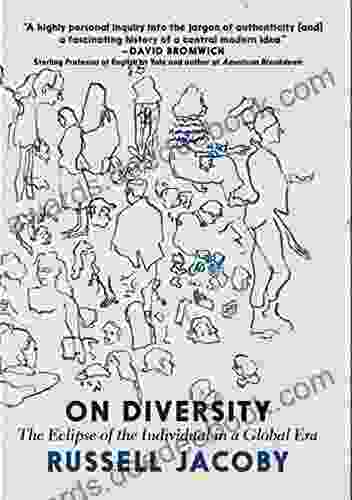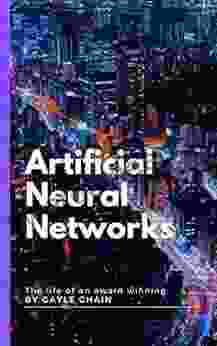Hands-On Ensemble Learning: Techniques and Best Practices for Boosting Model Performance

Ensemble learning is a powerful machine learning technique that combines multiple base learners to improve overall predictive performance. By leveraging the collective knowledge of individual models, ensemble methods can address limitations and enhance the accuracy and robustness of predictions. In this article, we delve into the world of ensemble learning, exploring various techniques and best practices to empower you with hands-on knowledge for boosting your model performance.
Ensemble Learning Techniques
Ensemble learning encompasses a range of techniques, each with its distinct approach to combining base learners:
5 out of 5
| Language | : | English |
| File size | : | 15793 KB |
| Text-to-Speech | : | Enabled |
| Screen Reader | : | Supported |
| Enhanced typesetting | : | Enabled |
| Print length | : | 376 pages |
Bagging
Bagging (short for bootstrap aggregating) involves training multiple models on different subsets of the original training data. Each model is trained independently, and their predictions are combined through averaging or voting to produce the final prediction. Bagging is particularly effective for unstable models, where small changes in the training data can lead to significant variations in model predictions.
Boosting
Boosting algorithms, such as AdaBoost and Gradient Boosting Machines (GBM),sequentially train multiple models, with each subsequent model focused on correcting the errors of the preceding models. Boosting assigns different weights to training instances, emphasizing instances that were misclassified by previous models. By iteratively refining the ensemble, boosting enhances the overall predictive accuracy.
Stacking
Stacking involves training multiple models on the same training data, but the outputs of these models become the input features for a higher-level meta-model. The meta-model then makes the final prediction. Stacking allows for more complex interactions between base learners and can lead to improved performance in certain scenarios.
Selecting Base Learners
The choice of base learners for ensemble methods is crucial. While any type of model can serve as a base learner, the following factors should be considered:
Diversity
The base learners should exhibit diversity in their predictions to maximize the potential benefits of ensemble learning. Models with highly correlated predictions will not significantly improve ensemble performance.
Accuracy
The individual base learners should have reasonable predictive accuracy to contribute effectively to the ensemble. Poorly performing base learners can hinder the overall ensemble performance.
Computational Efficiency
Training multiple models can be computationally expensive. Choosing base learners with low training and prediction times is essential for maintaining efficiency.
Hyperparameter Tuning for Ensemble Methods
Optimizing the hyperparameters of ensemble methods is critical for maximizing their performance. The following hyperparameters are commonly tuned:
Number of Base Learners
The number of base learners in an ensemble can significantly impact its performance. Finding the optimal number requires experimentation and validation to balance model complexity and overfitting.
Learning Rate (Boosting)
For boosting algorithms, the learning rate controls the influence of each base learner on the final ensemble. A higher learning rate leads to more aggressive weighting of subsequent models, while a lower learning rate results in a more conservative approach.
Regularization (Bagging)
In bagging, regularization techniques, such as subsampling or dropout, can be employed to reduce overfitting and improve ensemble performance.
Best Practices for Ensemble Learning
To achieve optimal results with ensemble learning, follow these best practices:
Cross-Validation
Cross-validation is essential for evaluating the performance of ensemble methods and selecting appropriate hyperparameters. Divide the training data into multiple folds and train the ensemble on different combinations of these folds to obtain unbiased performance estimates.
Performance Metrics
Choosing appropriate performance metrics is crucial for assessing the effectiveness of ensemble methods. For classification tasks, metrics like accuracy, precision, recall, and F1-score are commonly used. For regression tasks, mean absolute error (MAE) or root mean squared error (RMSE) are suitable.
Feature Engineering
Effective feature engineering can significantly enhance the performance of ensemble methods. Explore different feature transformations, dimensionality reduction techniques, and feature selection algorithms to optimize the input data for model training.
Model Interpretation
Understanding the behavior and predictions of ensemble models is crucial. Techniques like SHAP (SHapley Additive Explanations) and LIME (Local Interpretable Model-Agnostic Explanations) can provide insights into model predictions and identify important features.
Example: Ensemble Learning with Random Forest and XGBoost
Consider a scenario where we aim to predict house prices using ensemble learning. We can implement a bagging ensemble with two base learners: a Random Forest model and an XGBoost model.
1. Import the necessary libraries and load the training data. 2. Create a Random Forest model with default hyperparameters. 3. Train the Random Forest model on the training data. 4. Create an XGBoost model with default hyperparameters. 5. Train the XGBoost model on the training data. 6. Combine the predictions of the Random Forest and XGBoost models using averaging or voting to produce the final ensemble prediction.
Ensemble learning is a powerful technique for improving the predictive performance of machine learning models. By leveraging the collective knowledge of multiple base learners, ensemble methods can address limitations, reduce variance, and enhance accuracy. Understanding the different ensemble techniques, selecting appropriate base learners, and tuning hyperparameters are key to successful ensemble learning. Implement these best practices in your projects to boost the performance of your machine learning models and unlock the full potential of ensemble learning.
5 out of 5
| Language | : | English |
| File size | : | 15793 KB |
| Text-to-Speech | : | Enabled |
| Screen Reader | : | Supported |
| Enhanced typesetting | : | Enabled |
| Print length | : | 376 pages |
Do you want to contribute by writing guest posts on this blog?
Please contact us and send us a resume of previous articles that you have written.
 Book
Book Novel
Novel Text
Text Story
Story Magazine
Magazine Newspaper
Newspaper Paragraph
Paragraph Bookmark
Bookmark Foreword
Foreword Preface
Preface Synopsis
Synopsis Codex
Codex Tome
Tome Bestseller
Bestseller Library card
Library card Autobiography
Autobiography Memoir
Memoir Reference
Reference Encyclopedia
Encyclopedia Dictionary
Dictionary Narrator
Narrator Character
Character Resolution
Resolution Librarian
Librarian Catalog
Catalog Stacks
Stacks Archives
Archives Study
Study Scholarly
Scholarly Lending
Lending Reserve
Reserve Academic
Academic Rare Books
Rare Books Special Collections
Special Collections Literacy
Literacy Study Group
Study Group Thesis
Thesis Dissertation
Dissertation Book Club
Book Club Theory
Theory Cathy Mcgough
Cathy Mcgough Carol Senatore
Carol Senatore Neil Devotta
Neil Devotta Jeff Allen
Jeff Allen Sven Thiele
Sven Thiele Alexandra Harney
Alexandra Harney Johannes M Zanker
Johannes M Zanker Jade M Wong
Jade M Wong Val Mcdermid
Val Mcdermid Larissa Kohler
Larissa Kohler Shawn James
Shawn James Dr Block
Dr Block Neil Vallelly
Neil Vallelly E M Thomas
E M Thomas Blaize Clement
Blaize Clement Ron Loftus
Ron Loftus Dimitrios Kravvaris
Dimitrios Kravvaris Lloyd Whitesell
Lloyd Whitesell Graham Denny
Graham Denny Timothy Janovsky
Timothy Janovsky
Light bulbAdvertise smarter! Our strategic ad space ensures maximum exposure. Reserve your spot today!
 Robert HeinleinFollow ·6.8k
Robert HeinleinFollow ·6.8k Terry PratchettFollow ·11.2k
Terry PratchettFollow ·11.2k Samuel WardFollow ·3.1k
Samuel WardFollow ·3.1k Bob CooperFollow ·9.7k
Bob CooperFollow ·9.7k Nathaniel PowellFollow ·15.6k
Nathaniel PowellFollow ·15.6k Clark CampbellFollow ·19.5k
Clark CampbellFollow ·19.5k Emanuel BellFollow ·10.9k
Emanuel BellFollow ·10.9k Ken SimmonsFollow ·2k
Ken SimmonsFollow ·2k

 Roger Turner
Roger TurnerThe Waning of the Individual in the Global Era: A...
In the rapidly globalizing world of today,...

 Reginald Cox
Reginald CoxFirst of Verbs: An Early Language
The First of Verbs (FOV) is an early...

 Cody Blair
Cody BlairThe Biography Of The Myth: Routledge Historical...
Who is the Myth?...

 Dean Cox
Dean CoxArtificial Neural Networks: Unraveling the Amazing...
Artificial Neural Networks (ANNs),...

 Kyle Powell
Kyle PowellHow To Amend Our Constitution To Rescue Democracy For All...
Our democracy is in...
5 out of 5
| Language | : | English |
| File size | : | 15793 KB |
| Text-to-Speech | : | Enabled |
| Screen Reader | : | Supported |
| Enhanced typesetting | : | Enabled |
| Print length | : | 376 pages |














